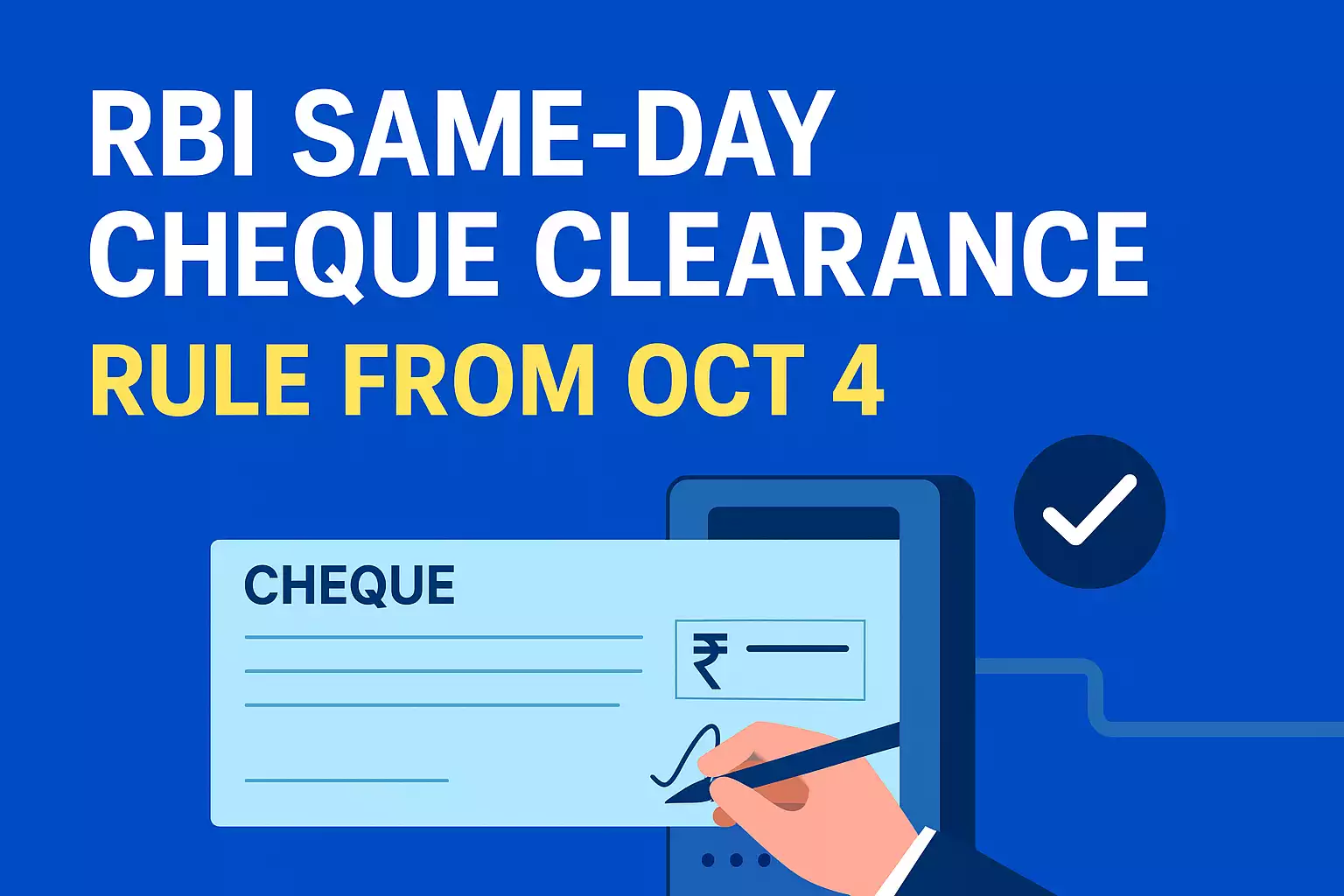Physical Address
304 North Cardinal St.
Dorchester Center, MA 02124
Physical Address
304 North Cardinal St.
Dorchester Center, MA 02124

The RBI Same-Day Cheque Clearance reform is set to transform India’s banking landscape. From October 4, 2025, cheque clearance will shift from multi-day waits to same-day or even hourly settlements. This is part of the Reserve Bank of India’s plan to make paper-based payments as fast and reliable as digital transfers.
Whether you’re an individual, a business owner, or a bank itself, this change will affect your transactions—reducing delays, improving trust, and boosting the efficiency of the entire banking ecosystem.
For decades, depositing a cheque in India meant waiting anywhere from two to three working days for the funds to clear—sometimes longer if weekends or bank holidays got in the way. This delay has frustrated customers and disrupted business cash flows.
The RBI is now putting an end to that wait. With the RBI Same-Day Cheque Clearance system, the Cheque Truncation System (CTS) will operate with continuous settlement and on-realisation processing. This means that cheques will be scanned, verified, and approved (or automatically deemed approved) in hours, not days.
💡 Related Reading: Learn how NEFT and RTGS complement this new cheque system for faster transactions.
This rule mandates that cheques deposited within specific time windows must be processed the same day. The process involves:
The RBI’s goal is to eliminate inefficiencies in India’s cheque payment system. The old batch-based method caused:
By introducing RBI Same-Day Cheque Clearance, the central bank aligns India’s cheque processing with global best practices while improving payment reliability.
Here’s the process under the new system:
The RBI Same-Day Cheque Clearance rule is a major win for individual account holders. It removes the anxiety of waiting for funds to be credited, allowing for better financial planning.
Key Benefits:
💡 Internal link idea: Check how RBI’s UPI changes will also make payments faster.
Businesses—especially SMEs—stand to gain significantly. With same-day clearance, cash flow improves, suppliers are paid faster, and business deals move ahead without delays.
For Businesses:
For the Economy:
📌 External link: Learn more in this RBI economic report.
While customers and businesses gain speed, banks must adapt operationally. The RBI Same-Day Cheque Clearance will require:
Though promising, the reform may face hurdles:
The RBI has addressed these by introducing the change in two phases.
To make the most of the new system:
India’s move to RBI Same-Day Cheque Clearance puts it among the most efficient cheque-processing nations. Let’s compare:
| Country | Typical Clearance Time | India Post-Reform |
|---|---|---|
| USA | 1–2 business days | Same-day/hourly |
| UK | Next business day | Same-day/hourly |
| Australia | 2–3 business days | Same-day/hourly |
This alignment with global best practices means Indian businesses can operate with the same payment efficiency as counterparts in advanced economies.
Even though UPI, NEFT, and RTGS dominate India’s payment landscape, cheques still matter. The RBI knows this and is ensuring both digital and paper-based systems are equally efficient.
Why cheques still matter:
Under the RBI Same-Day Cheque Clearance Rule, banks must:
📌 External Reference: Official notification here – RBI Guidelines PDF.
Banking experts, economists, and business leaders have reacted positively:
The launch of RBI Same-Day Cheque Clearance on October 4, 2025, marks the end of sluggish cheque settlements. Customers, businesses, and banks all benefit from this faster, more reliable payment process.
With cheques clearing within hours instead of days, India’s financial system takes a major leap forward. This is not just a banking update—it’s a shift towards real-time money movement across the country.
Phase 1 starts Oct 4, 2025; Phase 2 starts Jan 3, 2026.
Yes, if deposited within the RBI’s cut-off window.
Within 1 hour of settlement.
The cheque is deemed approved.
Yes, but clearance will follow the presentation date.